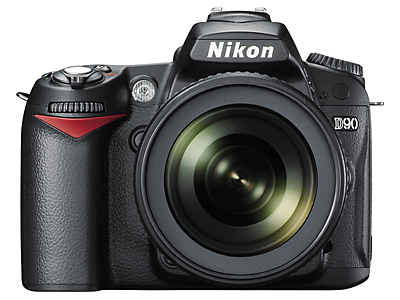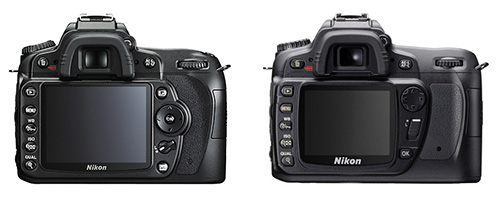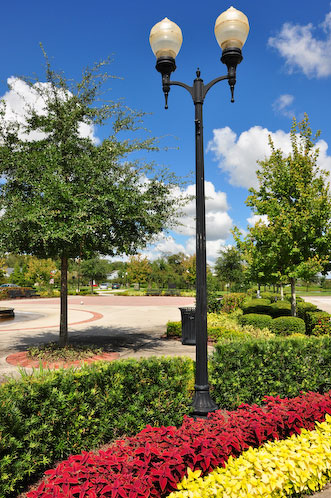Since the release of the Nikon D80, a lot has changed in the DSLR market. Entry level cameras like the D40 and D60 have made DSLRs much more accessible and opened up a lot of creative opportunities for amateur photographers all around the world. The D80 was an excellent camera but got a little lost in the Nikon lineup because it offered too many features for most beginning users and not quite enough for some advanced users. As the high and low-end models started to surpass the D80 in features, many began to wonder when we would see its replacement. The D90 started hitting retailers this past week, and I had the opportunity to get some time with the camera.
Editors Note: This is by no means an exhaustive review but merely my observations on the new camera. At this time, I don’t have any plans to do an in-depth review.
Body
When you first look at the D90, it seems as if almost nothing was changed from the D80. Although the physical body shape is about the same, there have been some subtle but very nice tweaks to the ergonomics. The camera seems a little more comfortable than the D80 (which handled very well), probably due to the slight adjustment of the grip and rear side of the camera. Weight wise, the D90 is virtually identical to the D80.


Front of the D90
The viewfinder is just about the same as the D80 including the same 11-point AF system and on-demand grid lines. One thing that was kind of interesting is you can now choose to have the number of remaining shots or the current ISO value displayed in the viewfinder. It would have been nice to have both, but beggars can’t be choosers.
Current D80 users will be happy to know their MB-D80 battery grip is fully compatible with the D90. I didn’t have the chance to try it out, but I’d suspect it feels the same way it did on the D80.
Control Layout
Current Nikon users will feel right at home because the control layout on the D90 is about 99% the same as the D80. The only major changes is the OK button is now an INFO button, a redesign of the lock switch and multi-selector, and the addition of a Live View button. The new lock switch is not as easy to bump as on the D80 and the multi-selector is a huge improvement and very similar to that of the D700/D3.


D90 Controls vs D80 Controls
Similar to all the recent Nikons, the INFO button can be used to bring up all of your current settings on the D90’s new big, bright 3.0-inch LCD screen. You can also tap the INFO button twice to access key Picture Controls and button customization without having to dig through the menu. I love this feature on the new D700, and I’m glad to see Nikon implementing it in all of the new cameras. For traditionalists, the top LCD displays all of the same information as the D80.
Menus
The menus in the D90 have been largely refined from the D80. The custom setting menu is now laid out like the higher models, splitting the menu into six different color-coded sub-menus (Autofocus, Metering/Exposure, Timers/AE Lock, etc). This is going to be a huge time-saver, especially considering there are over 40 custom settings.
The Shooting Menu is very similar to the D3/700/300 with the addition of the new Picture Control system, Active D-Lighting, and noise reduction options.
The D90 also features the Retouch Menu, inherited from the D40 and D60. There are some pretty interesting effects here, but I just can’t see most people spending time editing their pictures on the back of the camera screen. One interesting feature I stumbled on by accident, however, is the face detection in image playback. When you zoom into a picture on image playback, you can use the front command dial to center the zoomed image on a person’s face. Best of all, when you have multiple faces in the picture, it will scroll from face to face. I’m sure this will probably get overlooked by a lot of people, but I can think of many situations where this would be handy.
Performance
The D90 seems to be the “little brother” to the D300, similar to how the D80 was to the D200. While there are certainly some sacrifices in terms of build, durability, and features, the D90’s image quality seems to be almost identical to that of the D300. Considering both cameras use the same sensor, this should be no surprise. The autofocus does an excellent job as well, and seems to be a slight improvement over the D80.
Video Recording
One of the most talked about features when the D90 was announced was the video recording capabilities. While I didn’t play with this feature extensively, the quality was outstanding.
The biggest limitation I found was that you are strictly limited to manual focus. Focusing was absolutely no problem in controlled situations but I found it a bit hard to handhold, especially in sunlight. Because you have to use the camera in live-view to make use of the video, you can’t really steady the camera the way you’d normally hold an SLR, making it a bit shaky.
Even though the LCD is much better than that of the D80, it’s still very hard to see in bright sunlight – which makes critical focusing a bit difficult if you have to handhold the camera. If you plan to make use of the video extensively, I would definitely recommend bringing along your tripod.
Images
Here are a few images from my time with the D90. These are all JPEGs, with various different Picture Control settings (some custom). Like I’d mentioned earlier, the image quality seems to be nearly identical to the D300.


Nikon D90, 18-105mm f/3.5-5.6 VR, 1/800 sec @ f/8, ISO 200


Nikon D90, 18-105mm f/3.5-5.6 VR, 1/500 sec @ f/5.6, ISO 100 (Lo 1)


Nikon D90, 18-105mm f/3.5-5.6 VR, 1/160 sec @ f/5.6, ISO 100 (Lo 1)


Nikon D90, 12-24mm f/4, 1/250 sec @ f/5.6, ISO 200


Nikon D90, 12-24mm f/4, 1/500 sec @ f/8, ISO 200


Nikon D90, 50mm f/1.8, 1/40 sec @ f/2.2, ISO 1600
Conclusion
I think Nikon has positioned the D90 in an excellent place in their lineup. They’ve put enough features in it to make it a worthwhile step up from the low-end cameras (a problem the D80 faced with the introduction of the D40X and D60) but not as many professional features as the D300. The D90 has already been dubbed by many to be a “poor-man’s D300,” which I think will definitely be the case for a lot of people.
I think it will also serve as a very worthy upgrade for all of the D40/40X/60 owners looking to take the next step in the Nikon lineup. I think D80 owners looking to take the next leap would still be better jumping up to the D300, but the D90 still provides enough upgrades for those users at a much lower cost.
While the video does have its limitations, it’s still a groundbreaking feature that I’m sure many manufacturers will start implementing in their DSLRs (as this article is being published, Canon just announced the EOS 5D Mark II, their first DSLR with video capture capabilities). No matter how you look at it, the D90 is definitely going to be a hot seller with the amount of features it offers for its price.
